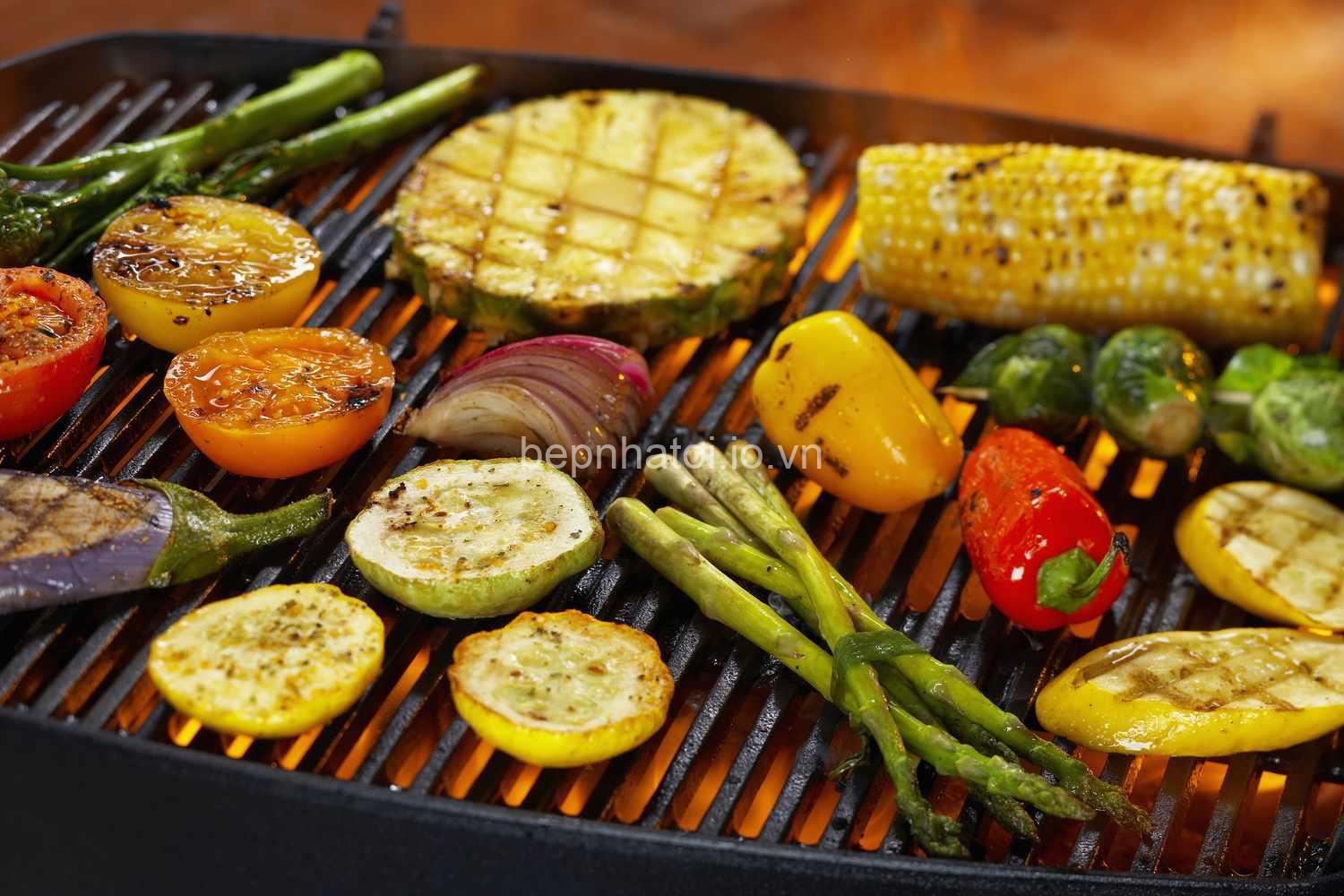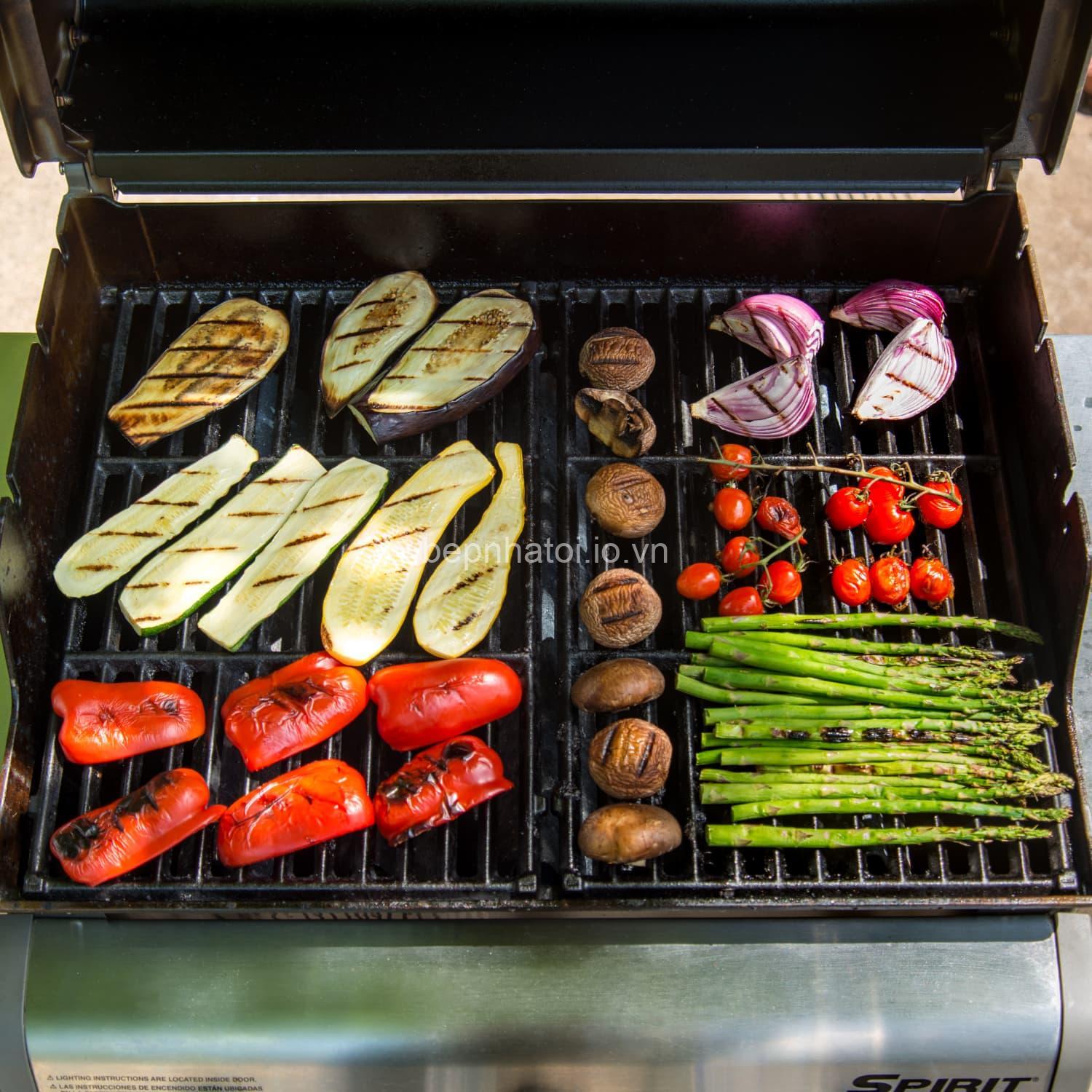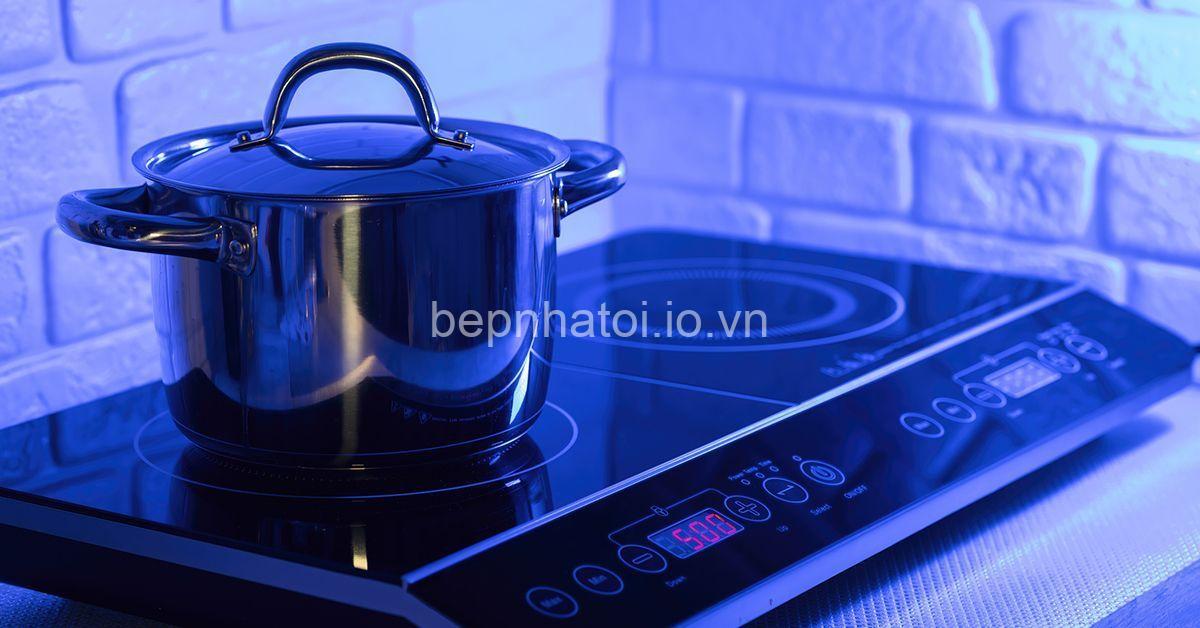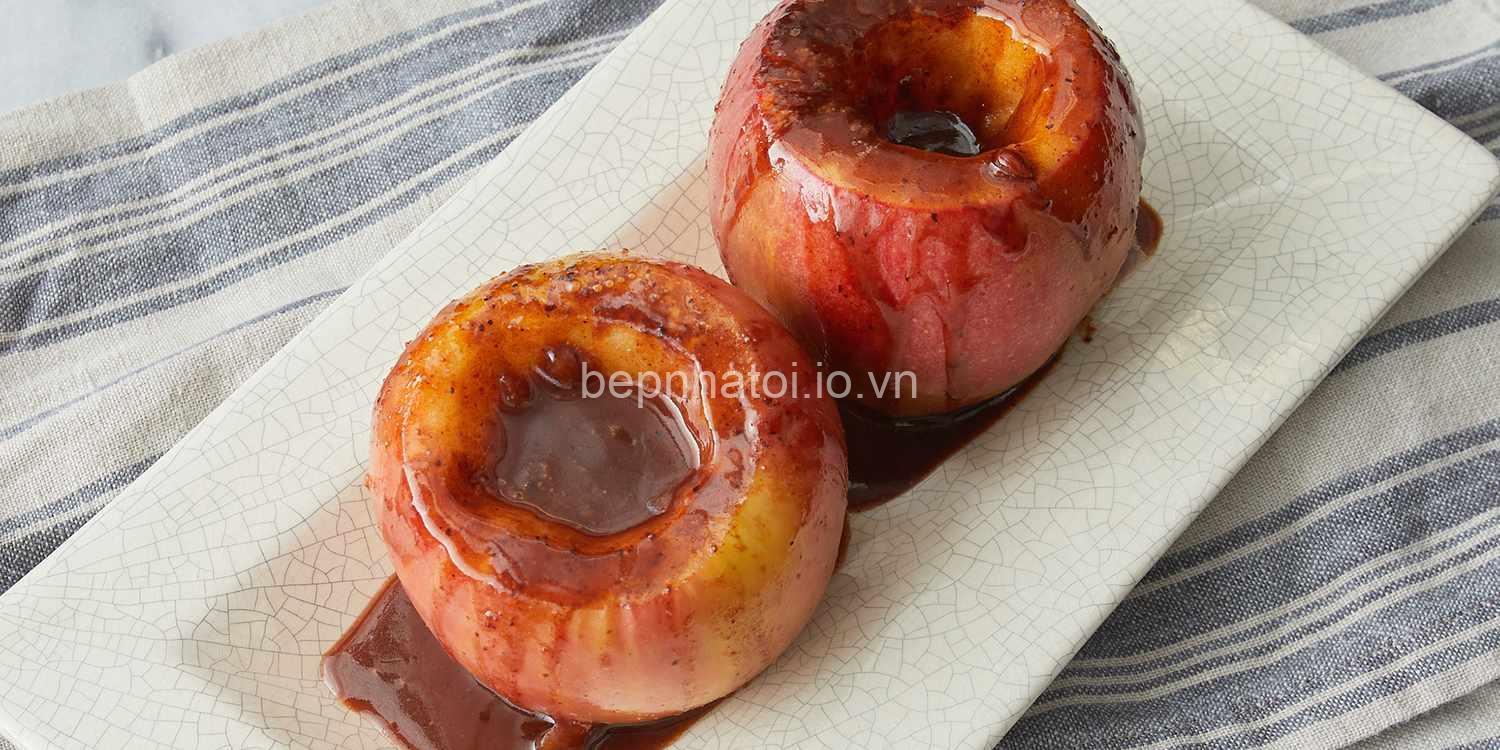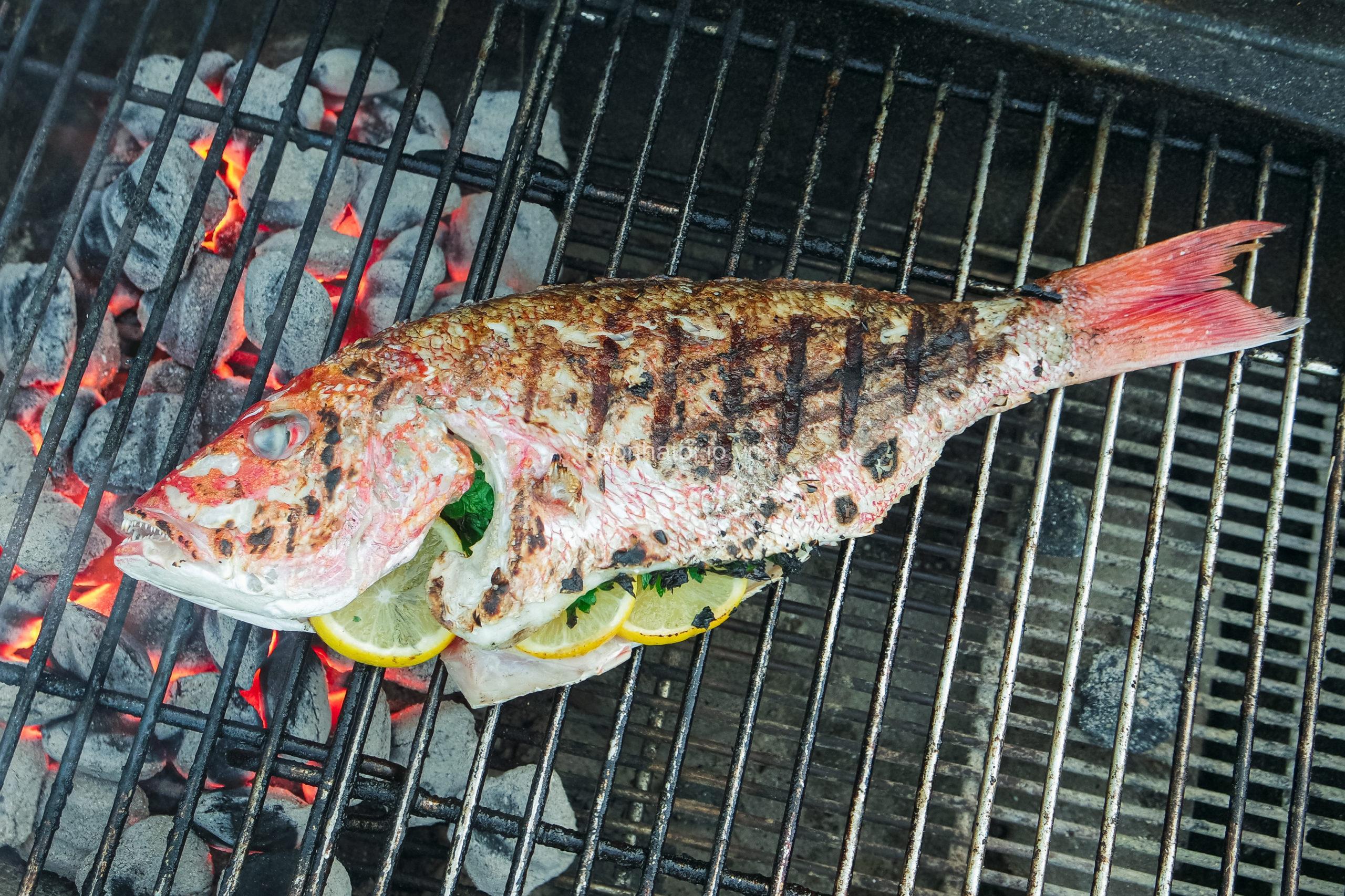
Grilling Fish Like a Pro: Choosing the Right Fish & Techniques. In today’s article, bepnhatoi.io.vn will explore with you in the most detailed and complete way. See now!
Choosing the Right Fish for Grilling
When it comes to grilling fish, choosing the right type makes all the difference. Different species have different characteristics that affect how they cook.
Understanding Fish Types and Grilling Compatibility
- Salmon: Known for its rich flavor and fat content, salmon is an ideal choice for grilling. Its fat content allows it to withstand direct heat, resulting in a beautifully charred exterior and moist, flaky interior.
- Tuna: Offering a firm texture and a leaner profile, tuna requires careful grilling to avoid overcooking. It’s best suited for grilling over medium heat or using the indirect grilling method.
- Swordfish: Its thick, dense flesh holds its shape well on the grill, producing a robust flavor. Swordfish can handle high heat and direct grilling, making it a great option for adventurous grillers.
- Mahi Mahi: This flaky, mild-flavored fish cooks quickly and responds well to marinades. Mahi Mahi is perfect for grilling over medium heat, resulting in a delicate and flavorful dish.
- Halibut: Known for its thick, meaty flesh, halibut is perfect for grilling whole or in fillets. Its dense texture allows it to hold up well on the grill and absorb flavors from marinades or seasonings.
Factors to Consider
Besides the fish type, several factors influence how well your fish will grill.
- Thickness: Thicker fish like halibut or swordfish can handle longer grilling times and may benefit from indirect heat.
- Fat Content: Fatty fish like salmon can withstand direct heat and develop a beautiful char. Leaner fish, like tuna, benefit from marinades and indirect grilling to prevent dryness.
- Bone Structure: Whole fish or fish with bones might require additional steps like wrapping in foil for easier grilling and to prevent sticking.
Tips for Selecting Fresh Fish
When choosing fish for grilling, freshness is key. Here are some tips to ensure you pick the best possible fish.
- Smell: Fresh fish should have a mild, ocean-like scent. Avoid any strong, fishy odors, which indicate spoilage.
- Eyes: Clear and bright eyes are a sign of freshness. Cloudy or sunken eyes suggest the fish is older.
- Gills: Fresh fish will have bright red gills. Dull or gray gills signal that the fish is not fresh.
- Texture: The flesh should be firm and springy to the touch. Avoid fish that feels mushy or limp.

Preparing Fish for Grilling
Once you’ve chosen your fish, proper preparation is essential for successful grilling.
Cleaning and Scaling
- Removing Scales: Use a fish scaler to remove scales for a clean and smooth surface that promotes even cooking and prevents sticking.
- Gutting and Cleaning: Clean the fish thoroughly by removing the insides, including the guts and gills.
Marinating
Marinating fish is a great way to enhance its flavor and moisture.
- Enhance Flavor and Moisture: A marinade can infuse the fish with complex flavors and help to keep it moist during grilling.
- Popular Marinade Options:
- Lemon Herb: This marinade brings out the natural flavors of the fish with a bright, citrusy touch.
- Soy Ginger: This marinade offers a savory and slightly sweet profile, adding depth to the fish’s flavor.
- Marinating Tips:
- Marinating Time: Marinate for at least 30 minutes, but ideally 1-2 hours, for maximum flavor penetration.
- Shallow Dish or Resealable Bag: Use a shallow dish or resealable bag for even marination.
Seasoning
Simple seasonings can enhance the fish’s flavor and add complexity to your dish.
- Enhance Flavor and Complexity: Seasoning can add a depth of flavor that complements the fish and elevates the overall taste.
- Basic Seasoning Options:
- Salt & Pepper: This classic combination enhances the natural flavors of the fish and balances other seasonings.
- Garlic Powder: Garlic powder adds a savory depth and complements most fish types.
- Additional Seasoning Ideas:
- Chili Powder: Provides a kick of heat for a more adventurous flavor.
- Paprika: Adds a sweet and smoky note, creating a warm and comforting flavor.
- Herbs: Fresh or dried herbs like rosemary, thyme, or oregano can elevate the flavor profile.
Using Skewers or Foil Packets
For certain fish types or for grilling convenience, consider using skewers or foil packets.
- Skewers: Skewers are ideal for grilling smaller fish pieces or chunks, like salmon or mahi-mahi. They help keep the fish together and allow for easy flipping.
- Foil Packets: Foil packets prevent sticking and ensure even cooking, particularly for delicate fish like tuna or halibut. They also allow you to incorporate additional ingredients like vegetables or herbs for a complete meal.
Grilling Techniques
Now that your fish is prepared, let’s explore the different grilling techniques.
Direct Grilling
- Best for: Thicker, fatty fish like salmon that can handle high heat and develop a crispy exterior.
- Technique: Cook over medium-high heat, flipping once to ensure even cooking. The intense heat creates a beautiful char and sears the fish’s surface.
Indirect Grilling
- Best for: Leaner fish or fish that requires longer cooking times. It’s also a good option for whole fish.
- Technique: Cook over medium heat, placing the fish away from direct flames. Use a grill with a lid to create indirect heat distribution and prevent overcooking.
Grilling Over Charcoal
- Benefits: Provides a unique smoky flavor and allows for precise temperature control.
- Technique: Use a charcoal grill with a heat-resistant surface. Control the heat by adjusting the vents and ensure proper air circulation.
Grilling on a Gas Grill
- Benefits: Offers quick heating and easier temperature control.
- Technique: Use a gas grill with even heat distribution and a lid for indirect grilling.
Tips and Tricks
Here are some extra tips and tricks to ensure your grilled fish is perfect.
- Flipping and Checking for Doneness:
- Flip the fish once, when it releases easily from the grill surface.
- Check for doneness with a fish spatula or thermometer. Flaky texture and an internal temperature of 145°F (63°C) indicate doneness.
- Preventing Fish from Sticking:
- Oil the grill grates before placing the fish to prevent sticking.
- Use a grill mat for additional protection against sticking.
- Avoiding Overcooking:
- Overcooked fish will become dry and tough.
- Watch for signs of overcooking: white, opaque flesh and a tendency to fall apart.
- Serving and Accompaniment:
- Serve grilled fish hot with a side dish and sauce.
- Popular side dishes: Grilled vegetables, rice pilaf, salad.
- Sauce suggestions: Lemon butter, salsa verde, chimichurri.
FAQs about Grilling Fish
What are the best fish types for grilling?
Salmon, tuna, swordfish, mahi-mahi, and halibut are all excellent choices for grilling.
How do I know when my fish is done?
Fish is done when it flakes easily with a fork and reaches an internal temperature of 145°F (63°C).
What happens if I overcook my fish?
Overcooked fish will become dry and tough.
Should I marinate my fish before grilling?
Marinating fish can enhance its flavor and moisture.
How do I prevent my fish from sticking to the grill?
Oil the grill grates, use a grill mat, or wrap the fish in foil.
Conclusion
Grilling fish can be a rewarding experience, offering a delicious and healthy meal. Remember to choose the right fish, prepare it properly, and use the appropriate grilling techniques for the best results. If you have any questions or want to share your own grilling tips, leave a comment below! To learn more about caring for your pets and find great products, visit bepnhatoi.io.vn.
